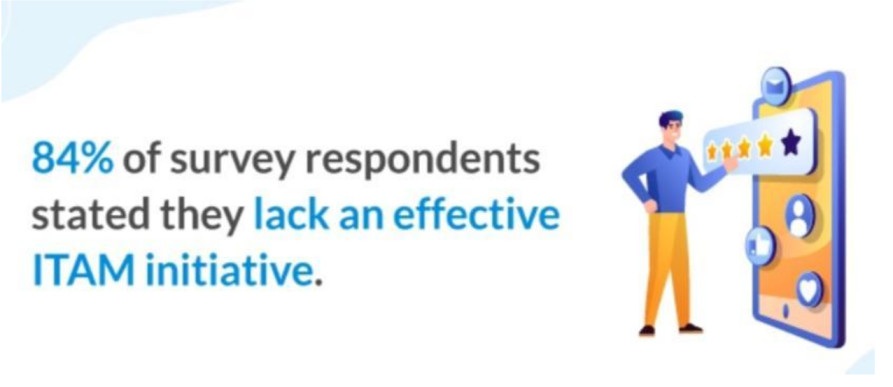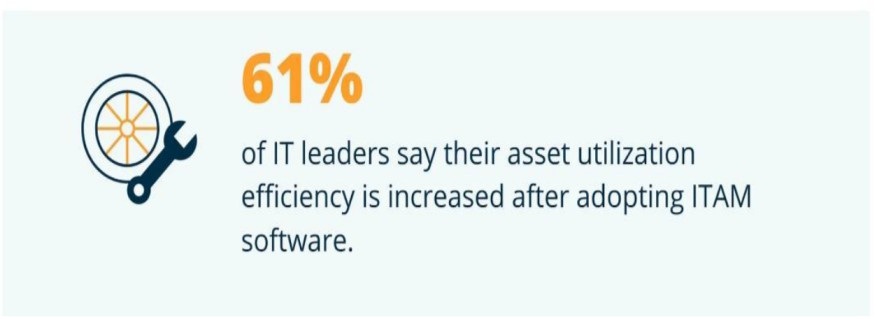IT Asset Management Best Practices: Gain Control of Your IT Assets
Adopt IT asset management best practices to make the most of your IT assets, reduce waste, and increase productivity. Learn everything about it in this guide.
In this article:
- IT Asset Management Best Practices
- 1. Define and Categorize
- 2. Assign Assets to Employees
- 3. Specify Products Before Assets
- 4. Track Consumables
- 5. Add Accessories
- 6. Identify and Manage Components
- 7. Don't Forget Your Digital Assets
- 8. Add Office Locations
- Use Itefy for IT Asset Management

IT Asset Management (ITAM) is at the heart of many businesses in 2024 and has gone beyond merely tracking IT assets. Today, it is a strategic process that optimizes hardware and software resources, making organizations more efficient than ever. You must adopt IT asset management best practices to get the most out of your spending.
According to a report, around 36% of desktop software bought by companies is either under-utilized or goes to complete waste. That's a lot of money that you can save through IT asset management best practices. Our guide will teach you what they are and how you can implement them.
IT Asset Management Best Practices
Let's discuss the details of IT asset management best practices.

Many companies lack a robust ITAM strategy.
1. Define and Categorize
You can start by declaring some items as assets, accessories, consumables, and software licenses. Categorize your items using general names, such as Desktops, Monitors, and Printers, instead of niche names like Samsung Monitors or LG Displays. This makes category overview much simpler down the line.
After creating these categories and adding all the items, it's time to upload them to your asset management system.
2. Assign Assets to Employees
Once all items have been added, assign them to the employees who currently possess them. It'll tell you which employee has a particular asset and how many assets they generally hold. Assigning assets this way helps you build a detailed log of each item and its history.
When assigning assets to employees, specify their condition, add the return date, and click a photo. Then, email the employee these details so that they return the asset in the same condition shown in the picture.
Information technology asset management software helps you assign assets to multiple employees with just one click. It also notifies you when the return date approaches so you can add the asset condition again, as you did in the beginning.

Using ITAM software makes your firm more efficient.
3. Specify Products Before Assets
Usually, companies have multiple assets of the same product, such as 25 iPad Air 2024 tablets. Adding specific products to the software instead of repeatedly adding the same product when creating an asset can make everything much easier.
In the case of iPads, record the manufacturer name as Apple and the product name as iPad Air 2024 with its EOL (which can be the time when Apple stops software support for its devices).
You can also add custom fields so that all assets with those specifications can easily be categorized together. For instance, you can add a custom Storage Space field so that all iPad Airs 2024 can be placed in it. It helps you avoid looking up all the details next time you add an iPad Air 2024 to the system.
4. Track Consumables
Consumable items like printer ink and paper can be the hardest to track. These items don't have as much monetary worth as some of your premium assets, but they are still essential, and their shortage can cripple operations. Nobody wants to run out of printer ink when printing important documents.
One of IT asset management best practices is adding a minimum number of specific items, which can make life much easier. Whenever the stock runs low for a particular item, the system notifies you, and you can reorder it. Record the details when you reorder the product, such as model number, order number, and purchase price, for effective tracking.
5. Add Accessories
Accessories lie somewhere between your premium assets and consumables—not too important but important enough not to be categorized as consumables. These include items like headsets, cables, trackpads, and the like. Accessories are also integral to your operations, so losing them can be quite costly for your business.
For consumables, write specific model numbers and product names instead of generic ones, such as Mechanical Keyboards. Instead, add specific models like Logitech Pop Keys. Also, add a minimum number of assets like consumables to notify you whenever their stock runs low.
6. Identify and Manage Components
Your storage and work requirements might change over time, so upgrading components like SSDs, faster RAMs, and the like is crucial. These components belong to a specific asset and not an employee. For instance, when you give an employee a laptop with these upgrade internals, make sure you keep a detailed record. Doing that makes it easier to downgrade later or prevent employees from swapping out components.
Make sure you write model names with each component and give them a unique serial number.
7. Don't Forget Your Digital Assets
Many companies mistakenly focus on physical assets only when digital assets are equally, if not more, significant in ITAM best practices. Digital assets include software licenses, product keys, and the like. Software licenses can be expensive, so you must make the most of them through effective asset management IT.
Some of the most critical aspects of digital assets are:
- Expiry dates
- Termination dates
- Number of seats in use
When adding software licenses to check out specific employee seats, treat every product key as an individual seat. This will tell you who is using a specific product key and when their license expires.
ITAM software lets you check licenses for assets and employees. This is especially important when a license is assigned to a desktop used by multiple employees. The software will also notify you when a renewal is due.
8. Add Office Locations
If your company has multiple offices, it's critical to add each location to the system to know the number of assets at one location and the location for specific assets. It's also crucial to differentiate between assets that actually belong to a location and those that have been checked out to a location, such as routers, access points, and the like.
One critical consideration is that you should be as specific as possible when adding locations so that they are easy for everyone to understand. For instance, instead of writing Office 5, you should write Baltimore Office with its complete address and image of the location.
Use Itefy for IT Asset Management
IT asset management is a multi-faceted area that requires you to adopt IT asset management best practices. From categorizing assets to tracking consumables to monitoring digital assets, the described in the write-up can definitely take you in the right direction.
It's equally crucial to have software like Itefy's Asset Management System to keep track of your valuable IT assets. Our comprehensive ITAM solution has the most advanced features, such as location tracking, condition tracking, issue management, maintenance log, checkout, and much more. With live statistics and availability on all popular devices and operating systems, our Asset Management System should be an integral part of your ITAM strategy.
Try it today with a free 14-day trial and later upgrade to a bundle of your choice.
